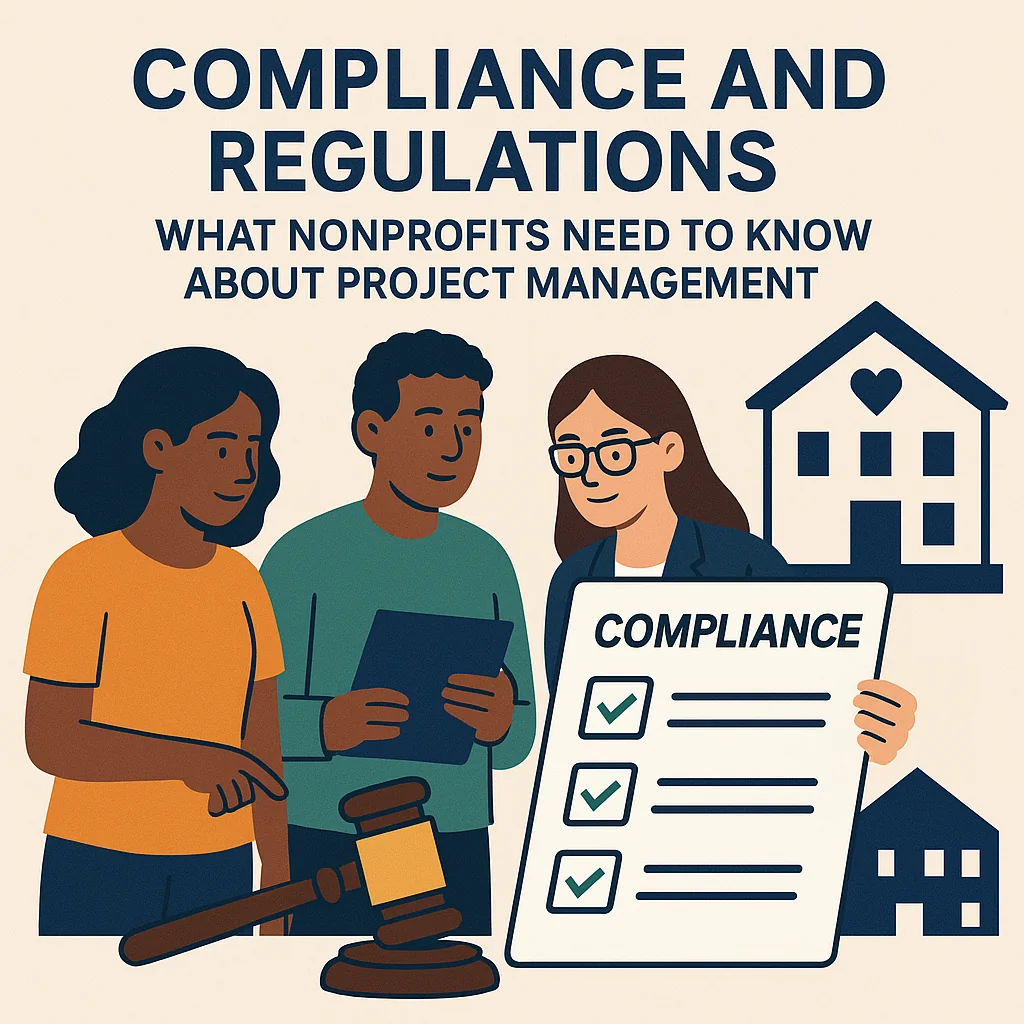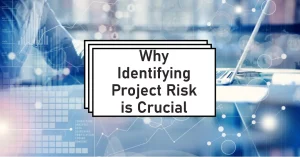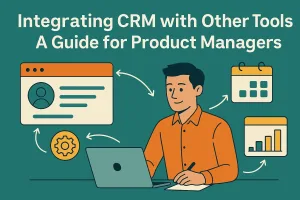Introduction
In nonprofit organizations, effective project management is crucial for achieving mission-driven goals while adhering to a complex web of compliance and regulatory requirements. Project management in this context refers to the systematic planning, execution, and oversight of projects that align with the nonprofit’s objectives, ensuring that resources are utilized efficiently and outcomes are measured effectively. This involves not only managing timelines and budgets but also navigating the specific legal and ethical standards that govern nonprofit operations.
The significance of compliance and regulations for nonprofits cannot be overstated. Nonprofits are subject to various federal, state, and local laws that dictate how they operate, manage funds, and report on their activities. Compliance is essential not only to avoid legal repercussions but also to maintain the trust of stakeholders, including donors, beneficiaries, and the community at large. Understanding these regulations helps nonprofits mitigate risks, enhance their credibility, and ultimately achieve their missions more effectively.
In this blog post, we will delve into the following key areas:
- An overview of the regulatory landscape affecting nonprofit project management.
- Best practices for ensuring compliance throughout the project lifecycle.
- The role of training and education in fostering a culture of compliance within nonprofit organizations.
- Practical strategies for project managers to integrate compliance into their project management processes.
By equipping nonprofit compliance officers and project managers with the knowledge and tools necessary to navigate the regulatory landscape, we aim to empower them to lead their organizations toward successful and compliant project outcomes.
Understanding the Regulatory Landscape
Compliance with various regulations is crucial for ensuring the integrity and sustainability of an organization. Nonprofit compliance officers and project managers must navigate a complex web of federal, state, and local regulations that govern their operations. Here are the key points to consider:
- Major Federal and State Regulations: Nonprofits are primarily governed by IRS regulations, which dictate how organizations must operate to maintain their tax-exempt status. This includes adhering to rules regarding fundraising, financial reporting, and operational transparency. Additionally, state charity laws impose specific requirements on nonprofits, such as registration and reporting obligations, which vary by state. Understanding these regulations is essential for compliance and to avoid penalties [3][9].
- Role of the Office of Management and Budget (OMB) and Uniform Guidance: The OMB plays a significant role in overseeing federal funding and ensuring that nonprofits comply with federal regulations. The Uniform Guidance, established by the OMB, provides a framework for federal awards to nonprofits, outlining the requirements for financial management, procurement, and performance reporting. This guidance is critical for nonprofits that receive federal funding, as it helps standardize compliance measures across various programs [6][9].
- Importance of Local Laws and Regulations: Beyond federal and state regulations, nonprofits must also be aware of local laws that can impact their operations. These may include zoning laws, local fundraising regulations, and specific compliance requirements related to local grants or contracts. Understanding and adhering to these local regulations is vital for maintaining good standing within the community and ensuring that projects align with local governance [3][4].
The Impact of Compliance on Project Management
Understanding and adhering to compliance regulations is crucial for effective project management. Compliance not only shapes the planning and execution of projects but also significantly influences funding opportunities and the overall reputation of the organization. Here are some key points to consider regarding the integration of compliance into project management processes:
- Integration of Compliance into Project Planning and Execution: Compliance should be a fundamental component of project planning from the outset. This involves a thorough understanding of regulatory obligations and grant requirements, which can vary widely depending on the funding source and the nature of the project. By incorporating compliance considerations into the project plan, nonprofits can ensure that all activities align with legal and financial standards, thereby minimizing risks and enhancing project success [1][3]. This proactive approach not only streamlines project execution but also fosters a culture of accountability within the organization.
- Consequences of Non-Compliance: Non-compliance can have severe repercussions for nonprofits, particularly in terms of project funding and organizational reputation. Failure to adhere to compliance regulations can lead to the loss of funding, as grantors often require strict adherence to guidelines as a condition of financial support. Additionally, non-compliance can tarnish an organization’s reputation, making it more challenging to secure future funding and partnerships. This underscores the importance of maintaining rigorous compliance practices throughout the project lifecycle [2][4].
- Necessity of Training for Staff: To effectively manage compliance, it is essential that staff involved in project management receive specialized training. This training should cover relevant regulations, standards, and best practices for compliance management. By equipping team members with the knowledge and skills necessary to navigate the regulatory landscape, nonprofits can enhance their project management capabilities and reduce the risk of non-compliance. Training programs can also foster a culture of compliance within the organization, ensuring that all employees understand their roles and responsibilities in maintaining adherence to regulations [5][10].
Best Practices for Compliance in Nonprofit Project Management
Understanding and adhering to compliance and regulatory requirements is crucial. Nonprofits must navigate a complex landscape of laws and regulations that can significantly impact their operations and project outcomes. Here are some actionable strategies to ensure compliance within project management:
1. Developing a Compliance Checklist for Project Managers
Creating a comprehensive compliance checklist is an essential first step for project managers. This checklist should include:
- Regulatory Requirements: Identify all relevant local, state, and federal regulations that apply to the nonprofit’s operations and projects. This may include financial reporting standards, data protection laws, and specific grant requirements [5].
- Grant Compliance: Ensure that project managers are aware of the specific compliance requirements tied to any grants received, including reporting deadlines and allowable expenses [4].
- Documentation Standards: Establish clear guidelines for documentation that project managers must follow to maintain compliance throughout the project lifecycle [6].
2. Regular Training and Updates on Regulatory Changes
To keep pace with the ever-evolving regulatory landscape, nonprofits should invest in regular training sessions for their project managers and compliance officers. This training should cover:
- Current Regulations: Provide updates on any changes to existing laws and regulations that may affect project management practices [9].
- Best Practices: Share best practices for compliance, including case studies and examples of successful compliance strategies from other nonprofits [3].
- Interactive Learning: Utilize workshops and interactive sessions to engage project managers in discussions about compliance challenges and solutions [2].
3. Establishing a Compliance Monitoring System Throughout the Project Lifecycle
Implementing a robust compliance monitoring system is vital for ensuring that projects remain compliant from inception to completion. This system should include:
- Regular Reviews: Schedule periodic reviews of project compliance against the established checklist to identify any potential issues early on [1].
- Feedback Mechanisms: Create channels for project managers to report compliance concerns or seek guidance on regulatory issues as they arise [8].
- Documentation and Reporting: Maintain thorough documentation of compliance efforts and outcomes, which can be invaluable during audits or evaluations [6].
By adopting these best practices, nonprofit organizations can enhance their project management processes while ensuring compliance with the necessary regulations. This proactive approach not only mitigates risks but also fosters a culture of accountability and transparency within the organization.
Case Studies: Successful Compliance in Nonprofit Projects
In nonprofit project management, compliance with regulations is crucial for ensuring the success and sustainability of initiatives. This section presents case studies of nonprofits that have effectively navigated the regulatory landscape, showcasing their compliance strategies, lessons learned, and the positive outcomes of their efforts.
Case Study 1: United Way Bay Area (UWBA)
Compliance Strategy: The UWBA faced challenges in managing corporate philanthropy effectively. They implemented a structured approach to compliance by developing clear guidelines for corporate partnerships and ensuring transparency in their funding processes. This included regular audits and stakeholder engagement to maintain accountability.
Lessons Learned:
- Stakeholder Engagement: Actively involving stakeholders in the compliance process helped build trust and fostered a collaborative environment.
- Clear Guidelines: Establishing clear compliance guidelines for corporate partnerships minimized misunderstandings and ensured all parties were aligned.
Outcomes: The UWBA’s commitment to compliance not only enhanced their reputation but also led to increased funding opportunities. Their transparent practices attracted more corporate partners, ultimately contributing to the success of their projects and initiatives [7].
Case Study 2: Habitat for Humanity
Compliance Strategy: Habitat for Humanity adopted a comprehensive compliance framework that included risk management and regular training for staff and volunteers. They focused on understanding local regulations related to construction and housing, ensuring that all projects adhered to legal requirements.
Lessons Learned:
- Ongoing Training: Regular training sessions for staff and volunteers on compliance issues helped mitigate risks and ensured everyone was informed about relevant regulations.
- Proactive Risk Management: Identifying potential compliance risks early in the project lifecycle allowed Habitat for Humanity to address issues before they escalated.
Outcomes: By prioritizing compliance, Habitat for Humanity successfully completed numerous housing projects without legal setbacks. Their proactive approach not only safeguarded their operations but also enhanced their credibility within the communities they served [4][8].
Case Study 3: The Nature Conservancy
Compliance Strategy: The Nature Conservancy implemented a robust system for tracking and reporting on grant-funded projects. They established efficient processes for evaluating compliance with environmental regulations and grant requirements, ensuring that all projects met the necessary standards.
Lessons Learned:
- Efficient Tracking Systems: Developing efficient systems for tracking compliance helped streamline reporting processes and reduced administrative burdens.
- Regular Evaluations: Conducting regular evaluations of compliance practices allowed the organization to adapt to changing regulations and improve their project management strategies.
Outcomes: The Nature Conservancy’s focus on compliance led to successful project outcomes, including the preservation of critical habitats and increased funding from grantors who valued their commitment to regulatory adherence. Their effective compliance strategies not only ensured project success but also strengthened their relationships with stakeholders and funders [3][9].
Resources for Nonprofits on Compliance and Project Management
Navigating the regulatory landscape is crucial for nonprofits, especially when it comes to project management. Compliance officers and project managers must be equipped with the right tools and resources to ensure adherence to regulations while effectively managing projects. Below is a curated list of organizations, software, and educational resources that can aid nonprofits in understanding and managing compliance.
Relevant Organizations and Agencies
- National Council of Nonprofits: This organization provides a wealth of information on compliance issues, including federal and state regulations that affect nonprofit operations. They offer resources and guidance tailored to the nonprofit sector.
- IRS (Internal Revenue Service): The IRS website contains essential information regarding tax compliance for nonprofits, including guidelines on maintaining tax-exempt status and reporting requirements.
- Foundation Center: This organization offers resources on grant compliance and reporting, helping nonprofits understand the obligations tied to funding.
- State Charity Officials: Each state has its own charity regulator, which can provide specific compliance information relevant to nonprofits operating within that state.
Software and Tools for Project Management and Compliance Tracking
- Asana: This project management tool is user-friendly and allows nonprofits to track tasks, deadlines, and compliance-related activities. It can be integrated with other tools to enhance compliance tracking.
- ClickUp: Known for its versatility, ClickUp offers features that help nonprofits manage projects while ensuring compliance with various regulations. It includes task assignments, time tracking, and reporting functionalities.
- Amplifund: Specifically designed for grant management, Amplifund helps nonprofits manage compliance with federal and state grant requirements, making it easier to track obligations and deadlines.
- eCivis: This software provides grant management solutions that assist nonprofits in maintaining compliance with grant regulations, including reporting and documentation.
Online Courses and Webinars
- NonprofitReady: This platform offers free online courses tailored to nonprofit professionals, including topics on compliance and project management. Courses are designed to enhance understanding of regulatory requirements.
- GrantSpace by Candid: GrantSpace provides webinars and resources focused on grant compliance, helping nonprofit project managers understand the intricacies of managing grants and adhering to compliance standards.
- The Nonprofit Academy: This online learning platform offers courses specifically aimed at nonprofit compliance, covering essential topics such as financial management, reporting, and regulatory requirements.
By leveraging these resources, nonprofit compliance officers and project managers can enhance their understanding of the regulatory landscape and improve their project management practices. This proactive approach not only ensures compliance but also contributes to the overall effectiveness and sustainability of nonprofit organizations.
Conclusion
Understanding and adhering to compliance and regulatory requirements is not just a best practice; it is essential for the sustainability and effectiveness of any organization. Compliance ensures that nonprofits operate within the legal frameworks that govern their activities, thereby minimizing risks and enhancing their credibility with stakeholders.
Key takeaways include:
- Importance of Compliance: Compliance is critical in nonprofit project management as it helps to mitigate risks and ensures that projects align with regulatory obligations. This adherence not only protects the organization but also fosters trust among donors, beneficiaries, and the community at large [4][5].
- Implementation of Best Practices: Nonprofits are encouraged to adopt the best practices discussed throughout this blog. This includes regular training for staff on compliance matters, maintaining accurate financial records, and conducting internal audits to ensure adherence to regulations. By embedding these practices into their project management processes, nonprofits can enhance their operational efficiency and accountability [8][9].
In conclusion, ongoing compliance efforts are vital for the success of nonprofit projects. By prioritizing compliance and sharing knowledge, nonprofits can navigate the complex regulatory landscape more effectively, ensuring their missions are fulfilled with integrity and transparency.
Find out more about Shaun Stoltz https://www.shaunstoltz.com/about/.
This post was written by an AI and reviewed/edited by a human.



